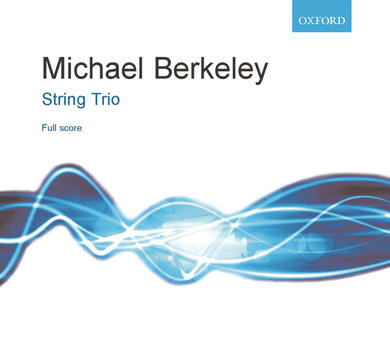Accompanied song
Ballet
Brass ensemble
Brass quintet
Chamber orchestra
Choral
Choral with orchestra
Concerto
Ensemble with string orchestra
Exhibition
Guitar
Instrumental
Instrumental ensemble
Opera
Quintet
Solo instrumental
String orchestra
String quartet
String trio
Vocal with chamber orchestra
Wind band
Wind quintet
String trio works
String Trio
Duration: 15 minutes
In 1976 I began studies with Richard Rodney Bennett who had in turn been taught by my father, Lennox Berkeley. It was generally agreed that Lennox was too nice and gentle a person to be of much use to me at this particular point. Whilst I had learnt an enormous amount from him over the years, I now needed the sort of disciplined guidance in technique that is, in most instances I think, very hard for parents to give to their own children.
On day one of my sessions Richard looked at my scores and asked me what I was thinking of writing next. Like many students I suggested an orchestral work. Realising that my problem was not a shortage of ideas but rather the lack of a technique with which to select and develop them, Richard replied that he had in mind a somewhat smaller scaled piece with just one or two lines so that I could not resort to mere gesture - in particular percussion! Not being a complete fool I opted for a Trio (rather than a duo) and over the course of the following months I re-wrote this String Trio eleven times until I could justify the presence of every single note. It was a hard but useful experience and I was mighty relieved to be told that "we will not need to do that again".
Ever since I have had something of a soft spot for this two movement work which is dedicated (with much gratitude) to Richard Rodney Bennett.
A three bar theme introduces the first movement which is deliberately worked almost entirely in step-by-step crotchets. The Allegro that follows is more spiky and angular but has a lyrical central passage in 3/8 which is rather like a speeded up and inverted reference to the slow three in a bar with which the Trio opens.

